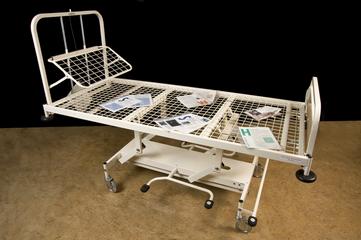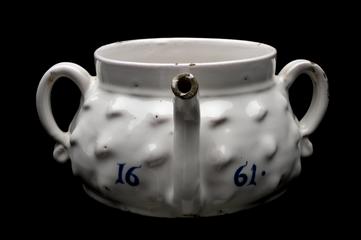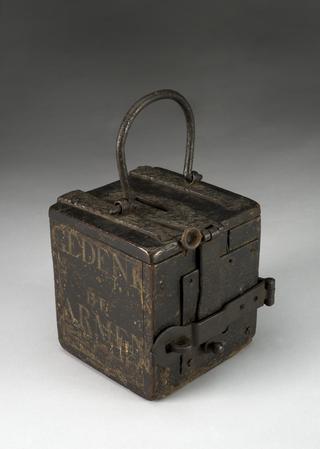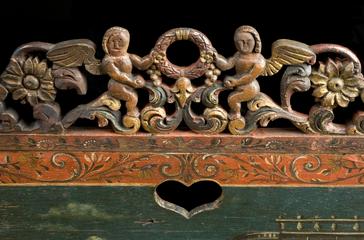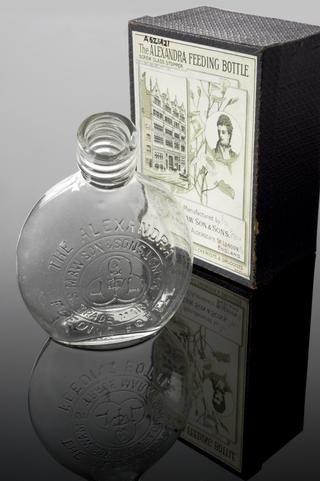
Breast Pump, London, England, 1870-1901

Glass and brass breast pump, in mahogany case, by S. Maw Son & Thompson, London, 1870-1901
Breast pumps were used by mothers to remove their milk if they either had trouble breastfeeding directly or wanted to put their milk in a bottle to feed their babies in a public area. This glass and brass breast pump used a siphon to draw off the milk. The milk was then fed to the baby via a bottle. The pump was made by S. Maw, Son & Thompson of London.
Doctors of this period advised breastfeeding was best for infants. They said babies should be breastfed by the mother if possible, or a wet nurse of ‘good moral character’. Babies during the 1800s might also be fed unboiled cow’s milk, a sugar and water mix from a bottle, or mixtures of milk and sugar with either bread or flour from vessels called pap boats. Dried milk and condensed milk were introduced in the 1860s. However, doctors claimed the milk caused diarrhoea, indigestion and rickets in babies.
Details
- Category:
- Nursing & Hospital Furnishings
- Collection:
- Sir Henry Wellcome's Museum Collection
- Object Number:
- A606872
- Materials:
- pump, glass, pump, brass, case, wood, case, velvet, lined and case, brass
- Measurements:
-
overall: 74 mm x 125 mm x 110 mm, .56kg
overall (pump assembled): 54 mm x 170 mm 54 mm,
- type:
- breast pump
- credit:
- Leicester Museum
